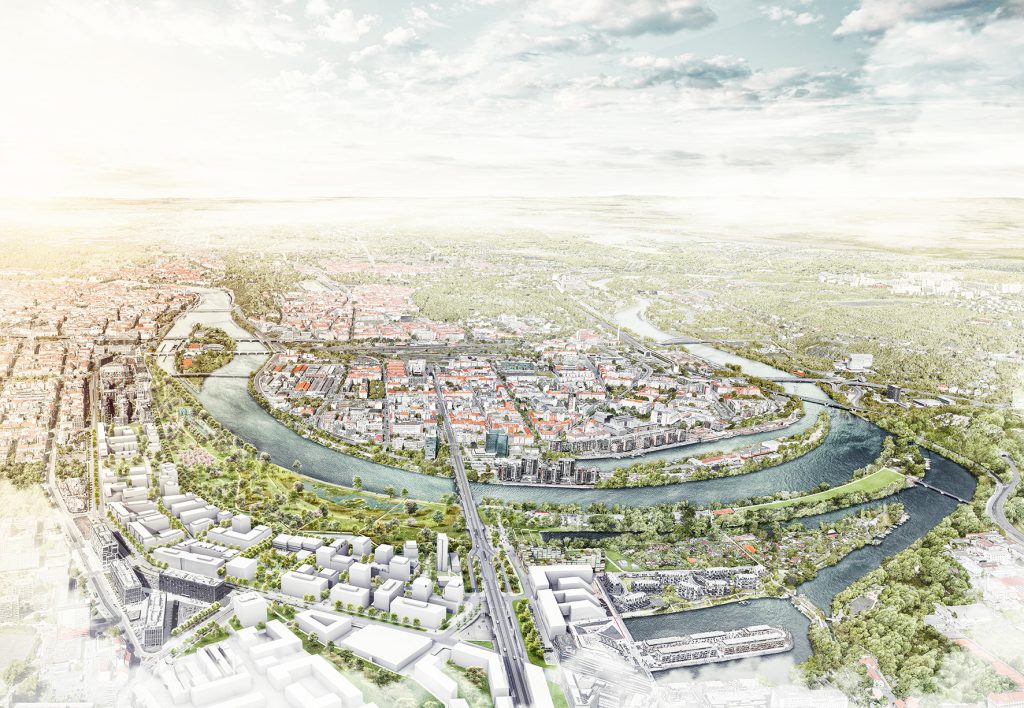
Until September 8, 2019, the exhibition “Access for All” in the Architekturmuseum München will focus on the social infrastructures of the city of São Paulo.
Billboard
Skyscrapper
Halfpage
Until September 8, 2019, the exhibition “Access for All” in the Architekturmuseum München (Architecture Museum in Munich) will focus on the social infrastructures of the city of São Paulo and present buildings and open spaces that create integrative spaces for an urban society.
On the façade of Munich Architekturmuseum, bright red, large capital letters advertise the title of its recent exhibition: “Access for All”. Three words that aren’t always easy to realise. São Paulo, Brazil’s biggest city, however, certainly meets this goal with success. The city of over 20 million inhabitants manages to achieve this despite facing complex challenges, ranging from environmental pollution and water supply to traffic overload, social inequality and informal settlements.
Is it possible for a densely populated city with abundant resources and just as many problems to serve as a role-model for openly accessible spaces that allow for multipurpose use free of conflicts? And how? Since in São Paulo, public and private parties have been investing for many years in architectonical infrastructures that compensate spatial narrowness and at the same time aim to improve people’s quality of life through relaxation, culture and sports.
From the Marquise to the swimming pool on the roof
The exhibition focuses on open spaces, large multifunctional buildings and the Avenida Paulista – all of them integrative spaces for urban society. Oscar Niemeyer’s Marquise in Ibirapuera Park is an example of open spaces: a roof, which simultaneously serves as a pathway, under which nothing has to happen, but anything can. It’s actively used by inline skaters, skateboarders, BMX riders, walkers and fruit vendors. The “SESC 24 de Maio” by the architect Paolo Mendes da Rocha is a multifunctional building par excellence: it offers various recreational activities across 14 floors, including a theatre in the lower level, a restaurant, a library and a rooftop swimming pool. A ramp provides street access to the building and extends across all floors. Most of the spaces are open to everyone.
Avenida Paulista: a place of encounter, of conflict, of demonstration and of tolerance
Spatially and structurally, the exhibition is divided into three areas, which the visitor explores from front to back. The first section includes the projects with photographs, illustrations and plans, presented on black steel frames with grids and on white tabletops. It comes across as spontaneous, provisional and entertaining while subtly striking a chord of casual urbanity. This impression is enhanced in the second area of the exhibition room, which focusses on the Avenida Paulista and showcases a model of the street and adjacent buildings in the centre of the room. This nearly three-kilometre boulevard is located beneath all the skyscrapers and is closed to traffic every Sunday. It’s a place of encounter, of conflict, of demonstration and of tolerance. In the model, the Avenida and the other freely accessible spaces along the street are coloured in bright red. This visualises that it’s exactly these spaces, running like a red vein between banks, hotels and corporate headquarters, that give the city its vitality.
A miniature Marquise à la Niemeyer, on which people can sit, transforms the third and last area of the exhibition into a space of reflection and encounter. Just like in the open spaces of São Paulo, visitors can decide how they want to use it– whether they would like to read specialist publications, watch interviews on the projects, play chess or observe other visitors.
Inspiration for any modern big city
The exhibition “Access For All“ manages to showcase something that isn’t directly present and makes it perceptible on different levels: the great value of open spaces for urban society between prestigious buildings, between narrowness, stress and conflicts. While the focus is on São Paulo, the exhibition offers inspiration for any modern big city. Urban life takes place in the openly accessible spaces where there is no obligation to consume. It’s in these very spaces that a community practises democracy.















